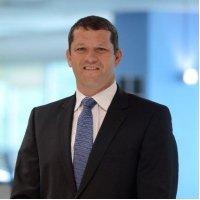LAS VEGAS – It’s only been seven weeks since the historic news that Hewlett-Packard would operate as two separate companies within the next 12 months.
Since that time not much information besides “business as usual” has come out of HP. To be fair, HP is currently in its quiet period, but Christoph Schnell, the senior vice-president of HP Printing and Personal Systems Group (PPS), along with the managing director of HP Americas, revealed many new factors of the HP split during the VARnex conference.
Schnell called the HP split the largest start up in the world. In a year, HP Inc. will be ranked 49 on the Fortune 500 list, while Hewlett-Packard Enterprise will be one spot ahead at No. 48.

Christoh Schnell of HP
“HP was born in a garage. Now it’s a double car garage with two cars going their separate ways, but still parked in the same garage. It will take one year to manage the separation but we will have lots of synergies,” Schnell said.
Once on their own, the two HPs want to create technology and services that blend in a home and business aspect. Schnell said that home and business cross many times for many users every day. He added that the two HPs will work on new BYOD strategies along with developing apps through channel partners that can manage back and forth.
On the printing side of PPS, Schnell said that the printing and imaging sector is moving from transactional selling to contractional selling. HP recently introduced the MultiJet Fusion printing solution that is able to capture 3D images and bring them to life, Schnell said.
He cited two customer examples on this market transition. Pep Boys, a spare parts auto retailer, called Schnell shortly after the HP split was announced to find out if 3D printing could produce bumpers. Currently Pep Boys manufactures bumpers in China and have them shipped to North America. Pep Boys is looking to end this complex and costly supply chain, according to Schnell.
“This struck a chord with me,” Schnell said. “Are we going to a print to distribution mode to distribution to print? Or are we now producing to distribution moving to distribution and reducing?”
Schnell said this has the opportunity to bring about a massive change on product manufacturing.
Therefore, Schnell announced that 3D printing for HP will be a commercial enterprise sold entirely through channel partners. HP will not entertain a consumer play with 3D printing.
The second customer example was the American Dental Association, which wants to print a tooth through a 3D scan. Schnell said this is possible today with 3D printers, however the material is limited. He believes the new MultiJet Fusion technology can extend the materials for 3D printers.
“Why am I saying this? Pep Boys do not want to be a 3D printer. They want to make bumpers. We need solution providers to cover this market for maintenance and product support. We want to sell big devices and we need to discuss this with the channel because the opportunity is massive,” Schnell added.
Schnell, who arrived to HP from Philips Electronics just three months ago, described the current HP as a very hard elevator pitch. “It’s hard because the elevator ride is n’t long enough But, now that we have split into two we can be more nimble and quicker to market,” he said.
By splitting into two HP Inc. will be able to generate more profits on its printing products, while increasing cash flow on the PC side. He believes this aspect will make channel partners invest more in the two HPs.






Paolo, great update and some interesting customer applications to think about in 3D printing. I like the 2 car garage analogy.
Great article, Paolo. The implications of the couple of customer requests you’ve cited are pretty massive. Fascinating stuff, really.